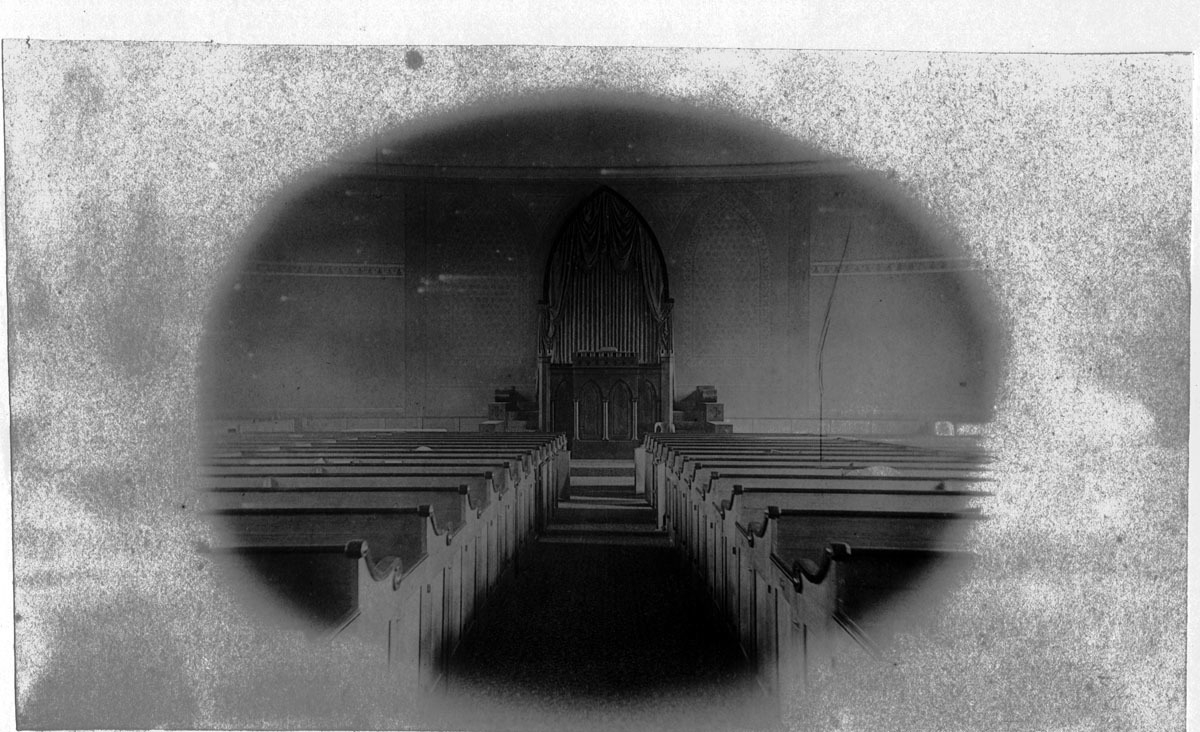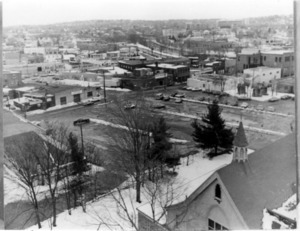First Parish Church (Unitarian).
Item Information
- Title:
- First Parish Church (Unitarian).
- Description:
-
Interior photographed by Captain J. Pitman, stationed at the Watertown Arsenal, November 17, 1885. After the separation of church and state in 1833, the old Parish Church was required to separate from the town, and it built a new church, now officially Unitarian, in 1836. This structure burned and was replaced in 1842. The Watertown congregation gained a reputation for non-conformity very early in its history when its first minister George Phillips said that churches other than Puritan ones were legitimate congregations, and residents of the community affirmed a revolutionary rallying cry of no taxation without representation. The First Parish of Watertown has worshipped in eight different meetinghouses since 1630. The first building was constructed near present day Mt. Auburn Hospital in Cambridge, where the original Watertown settlement was located. Subsequent meetinghouses included sites at the corner of Arlington and Mt. Auburn Street, on Hillside St., at the top of Common Street, and then in 1755 a fifth building was erected at the bottom of Common Street on Mt. Auburn Street. This structure became the meeting place for the Provincial Congress during the American Revolution, when Watertown was the capital while Boston was occupied by the British. The sixth, seventh and eighth buildings have all been located near the corner of Church and Summer Streets. After the separation of church and state in 1833, the old Parish Church was required to separate from the town, and it built a new church, now officially Unitarian, in 1836. This structure burned and was replaced in 1842. In 1889, the church built a new parish hall called, The Unitarian Building, designed by Charles Brigham. This building was converted into a church, when the old wooden Gothic building (1842) was torn down in 1975 Known for non-conformity in its early years, the First Parish of Watertown was guided into the Unitarian faith during the ministry of Convers Francis. Francis was active in the Transcendentalist movement, and a friend of Ralph Waldo Emerson. He became the mentor of famed preacher and abolitionist, Theodore Parker, who taught school here in Watertown. Francis sister was the abolitionist and writer Lydia Maria Child. Francis was followed in the ministry by John Weiss, another abolitionist preacher. Weiss was one of the first theologians to follow a scientific naturalism for his faith. He was also the founder of the Free Public Library of Watertown.
- Date:
-
November 17, 1885
- Format:
-
Photographs
- Location:
- Watertown Free Public Library
- Collection (local):
-
Watertown Churches
- Subjects:
-
Church buildings--Watertown--Massachusetts
Church history--Watertown--Massachusetts
Watertown (Mass.)--Social life and customs
Unitarian church--Watertown (Mass.)
- Places:
-
Massachusetts > Middlesex (county) > Watertown
- Permalink:
- https://ark.digitalcommonwealth.org/ark:/50959/7d2794866
- Terms of Use:
-
Management Restrictions apply. See application form at http://watertownlib.org/research/historic-watertown/photographs
Contact host institution for more information.
- Identifier:
-
figure 2173




